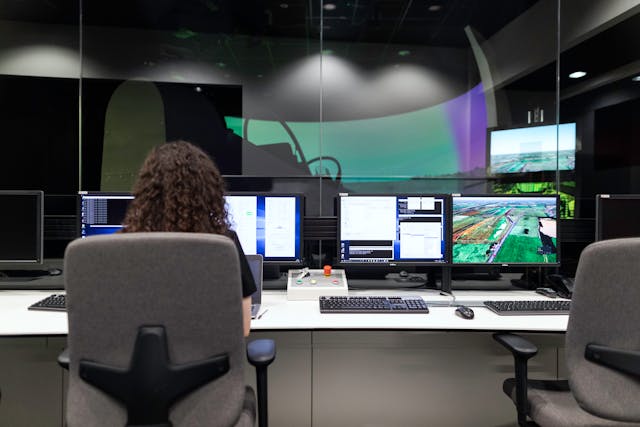Automated vs Manual Testing: 10 Key Differences Explained
In software testing, the choice between automated and manual testing is crucial for ensuring product quality. As technology evolves, low code test automation solutions have emerged, offering efficient alternatives to traditional manual testing approaches. Understanding the nuances between automated and manual testing and metrics for QA process measuring is essential for making informed decisions in your projects. This comprehensive guide navigates the crucial distinctions between automated and manual testing. Let’s start.
What is Automated Testing?
Automated testing is a software testing technique that uses specialised tools and scripts to automate the execution of test cases and the verification of expected outcomes. Instead of manual intervention, automated testing relies on predefined scripts or test scenarios to simulate user interactions and system behaviours. This approach allows for the rapid and repeated execution of tests, enabling organisations to detect defects early in the development cycle and ensure the reliability and stability of their software products.
Benefits and Features of Automated Testing
Automated testing offers many benefits and features that enhance the efficiency and effectiveness of the testing process.
Firstly, automated testing significantly reduces the time and effort required to execute test cases, as tests can be run automatically without human intervention. This leads to faster feedback on the quality of the software and accelerates the overall development process. Moreover, automated testing enhances test coverage by allowing for the execution of many test cases across various scenarios and environments. Test scripts can be reused and modified easily, allowing testers to validate the software's functionality comprehensively.
Additionally, automated tests improve accuracy and reliability by eliminating human errors associated with manual testing. Test scripts execute test cases precisely according to predefined criteria, ensuring consistency in test results and reducing the risk of false positives or negatives. Automated testing facilitates regression testing by quickly identifying regressions or unintended changes in the software's behaviour after modifications or updates. This ensures that new features or enhancements do not introduce unexpected defects or issues into the system. Overall, automated testing streamlines the testing process, improves test coverage and accuracy, and enables organisations to deliver high-quality software products efficiently and effectively.
What is Manual Testing?
Manual testing is a software testing approach where human testers manually execute test cases, observe system behaviour, and verify expected outcomes. Unlike automated testing, which relies on scripts and tools to automate test execution, manual testing involves direct human intervention to interact with the software application under test. Testers simulate real-world usage scenarios, input data, and evaluate the software's response to identify defects, usability issues, and other quality concerns.
Advantages and Features of Manual Testing
Manual testing offers several advantages and features that make it indispensable in software testing. Firstly, manual testing allows for exploratory testing, where testers can intuitively explore the software's functionality, user interface, and performance characteristics. This flexibility enables testers to uncover subtle defects and usability issues that automated tests may overlook.
Moreover, manual tests provide human judgment and intuition in assessing software behaviour and identifying potential risks. Testers can adapt their testing approach based on real-time observations and insights, offering valuable feedback to improve the software's quality and user experience.
Manual testing is well-suited for usability testing, where testers evaluate the software's ease of use, accessibility, and user satisfaction. Human testers can provide subjective feedback on the software's intuitiveness, layout, and navigation, helping developers refine the user interface and enhance overall usability. Furthermore, manual testing allows for ad-hoc testing, where testers can explore unscripted scenarios and conduct on-the-fly testing based on their domain knowledge and experience.
This agility enables testers to respond dynamically to emerging issues and test cases, ensuring comprehensive test coverage and thorough software validation. Manual testing complements automated testing by offering human insight, flexibility, and adaptability in assessing software quality. While automated testing excels in efficiency and scalability, manual testing remains invaluable for providing nuanced feedback, exploring unscripted scenarios, and ensuring the usability and user satisfaction of software applications.
Differences between Manual and Automated Testing
There are significant differences between 2 processes:
- Approach:
- Manual testing involves human testers executing test cases and observing system behavior directly.
- Automated testing relies on scripts or software tools to execute predefined test cases automatically.
- Execution Speed:
- Manual testing is typically slower and more time-consuming, requiring human intervention for each test case.
- Automated testing is faster and more efficient, as tests can be executed rapidly and repeatedly without human intervention.
- Accuracy:
- Manual testing may be prone to human errors, leading to potential inconsistencies and inaccuracies in test results.
- Automated testing ensures consistency and accuracy in test execution, following predefined scripts precisely.
- Test Coverage:
- Manual testing may struggle to achieve extensive test coverage, especially for repetitive or time-consuming test cases.
- Automated testing excels in achieving comprehensive test coverage, particularly for regression testing and repetitive tasks.
- Flexibility:
- Manual testing offers greater flexibility and adaptability in exploring ad-hoc scenarios and conducting exploratory testing.
- Automated testing, while efficient for predefined test cases, may lack the flexibility to handle unanticipated scenarios effectively.
- Human Judgment:
- Manual testing allows testers to apply human judgment and intuition in assessing software behaviour and identifying subtle issues.
- Automated testing, while precise, may lack the nuanced understanding and contextual awareness that human testers bring to the testing process.
- Maintenance:
- Automated tests require ongoing maintenance to ensure they remain relevant and effective, especially as the software evolves.
- Manual tests, while less reliant on scripts, may also require maintenance as testing requirements evolve.
Conclusion
In conclusion, the choice between automated and manual testing depends on various factors, including project requirements, budget, and timeline. While automated testing offers efficiency and scalability, manual testing provides flexibility and human insight. By understanding the key differences outlined in this guide and leveraging appropriate metrics for QA process measuring, you can optimise your testing strategy to deliver high-quality software products efficiently.

